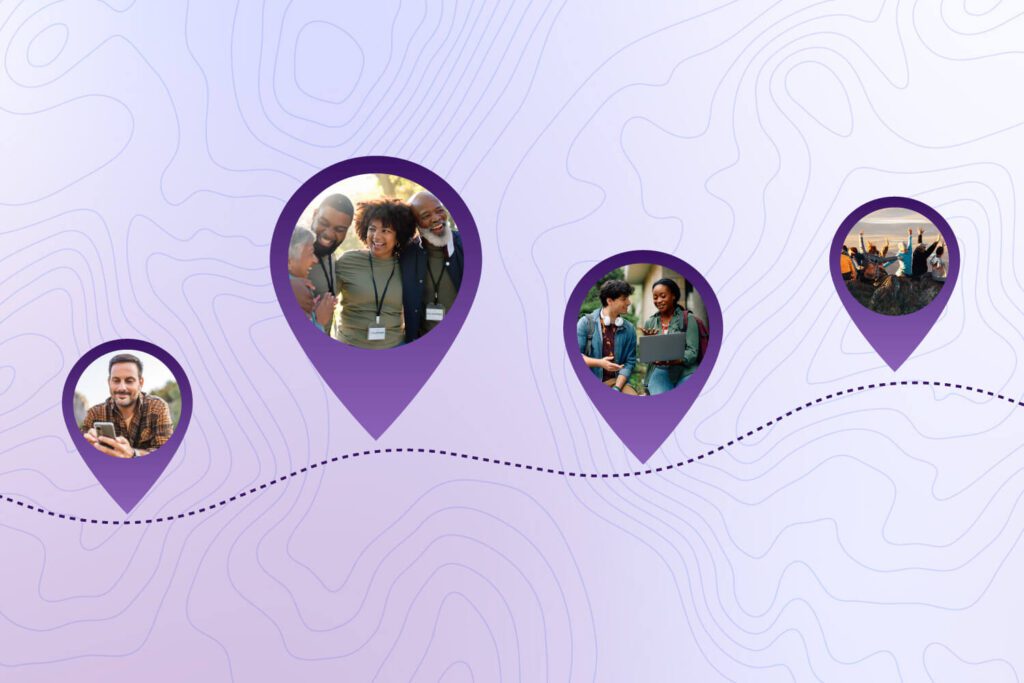Historically, nonprofit organizations led by Black, Indigenous, and people of color (BIPOC) receive less funding and experience more challenges when trying to secure funding from grantmaking organizations. According to NFF’s 2022 State of the Nonprofit Sector Survey, white-led nonprofits received more unrestricted funding, more federal funding, and more corporate funding than BIPOC-led organizations in the previous two years.
With this in mind, it’s more important than ever for grantmaking organizations to evaluate their practices to ensure they are equitable. By doing so, organizations of all kinds—especially BIPOC-led nonprofits—will be able to receive the support they need.
Investing in capacity building programs is a great way for your grantmaking organization to provide much-needed infrastructure to nonprofits. How you approach building these programs, and your overall capacity building strategy, can make a significant difference in enhancing DEIB initiatives and generating the most impact.
Let’s walk through some questions you should answer to develop your strategy.
1. What organizations have you historically invested in?
Take a look at the nonprofits that your grantmaking organization has historically supported. Is this group diverse and representative of your entire community? If not, take a step back and consider why that might be. This is a good opportunity to determine whether there are any biases present in your existing grantmaking process, along with steps you can take to eliminate them. For instance, have you taken purposeful steps to build relationships with BIPOC organizations in your community?2. Who are your decision-makers?
Identify the staff members building your strategy and who will be evaluating applications for your organization’s capacity building programs. Are your program officers representative of the broader community? Does your board of directors include BIPOC leaders? Prioritizing diverse voices ensures that many different perspectives and experiences can play a role in the decision-making process. Are these stakeholders looking at your capacity building strategy through an equitable lens?3. What are the needs of your community?
When developing your grantmaking organization’s capacity building strategy, it’s essential to consider the real needs of the nonprofits in your community. Leverage focus groups or surveys to gather their input. Remember that capacity building looks different for each organization. For instance, some of your community’s nonprofits may be struggling with staffing and fundraising while others could benefit from implementing more effective software solutions in their operations. Listen to their specific needs and be sure to provide various opportunities for support. Capacity building, unlike a one-time grant or need-based grant, is an ideal starting point because it represents an investment in a nonprofit’s scalability. Bonterra’s Jumpstart program empowers grantmaking organizations to promote equity and boost nonprofit capacity by starting with a Nonprofit Needs Assessment. This 15-minute survey is a fast, effortless, and peer-tested way to help you understand each nonprofit’s primary needs and concerns. With these insights, you’ll be able to prioritize investments that will drive greater impact.4. How accessible is your application process?
In addition to reviewing the Nonprofit Needs Assessment, consider the accessibility of your application process. What do you require from nonprofits when they apply for your capacity building support? Is the application itself long and demanding? Nonprofits with limited staff may not have the time or ability to complete a lengthy application. To accommodate their situation, offer alternative options such as interviewing applicants for a more authentic and simplified experience. Assess whether there are certain elements or requirements in your application that may limit a certain demographic’s ability to participate. Trust-Based Philanthropy Project’s guide offers several recommendations for grantmaking organizations, such as:- Provide multi-year unrestricted funding, so grantees have the flexibility to prioritize grant funds as needed.
- Conduct research on prospective grantees to identify their unique needs and resources.
- Solicit feedback from grantees to glean insights into how you can improve your grantmaking process moving forward.
Investing in your DEIB initiatives
Asking yourself these four important questions when establishing your capacity building strategy will pave the way for providing more equitable support to nonprofits within your community. The Jumpstart program can facilitate the process of establishing relationships with and investing in BIPOC-led organizations. Additionally, explore Bonterra’s “Grantmaking transformed” guide to unearth more best practices for examining the health of your grantmaking process and ensuring you are creating an equitable program for all nonprofits.
Ready to Get Started?




